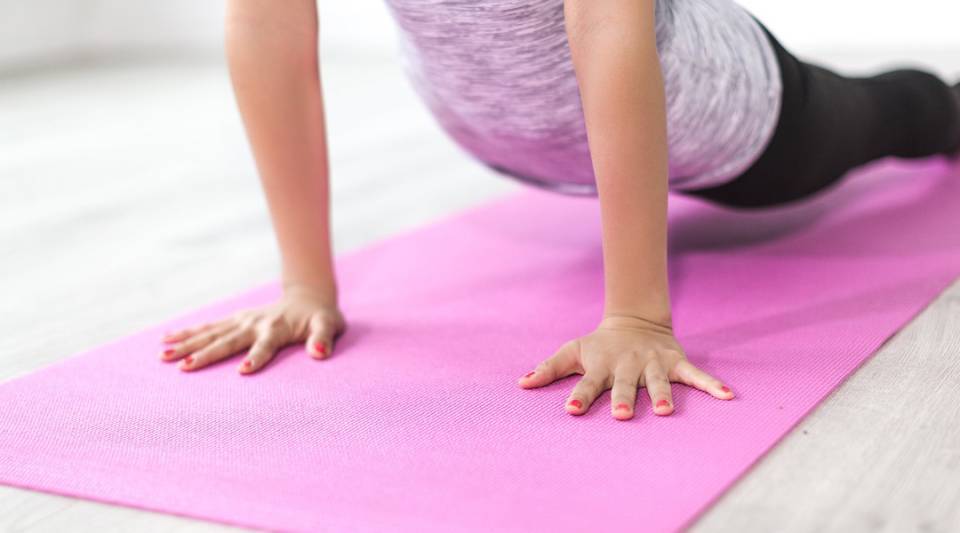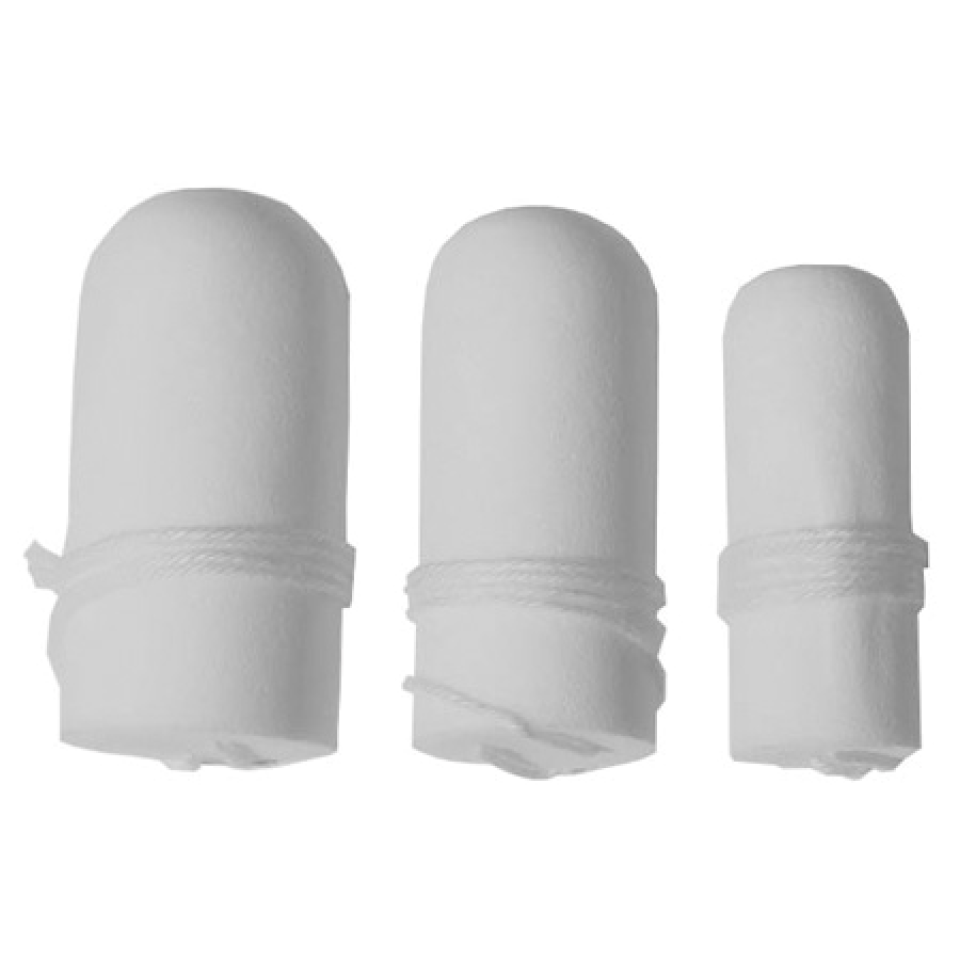18 January 2022
Urinary Incontinence Treatment
Some women who experience urinary incontinence sometimes disregard it because it only happens very occasionally, in very small quantities or it doesn’t interfere with their well-being, and so they don’t need to visit a doctor or receive any treatment. Contrastingly, in other women, urinary incontinence is detrimental and so they need to be aware of the treatment options available for each type of incontinence.
A high percentage of women with urinary incontinence who receive personalised treatment indicated by specialists manage to cure or significantly improve their symptoms.
There are several treatments for urinary incontinence. Treatment selection, which may involve a single therapy or a combination, is based on each patient’s characteristics, symptoms and the severity of their incontinence.
Conservative treatment includes a set of measures that do not involve surgery or taking medication. It is recommended for all women regardless of the type of incontinence they may have.

Lose weight. In overweight or obese women, it has been proven that a 5–10% weight decrease can reduce the weekly episodes of urinary incontinence by up to 50%. Individuals are therefore advised to lose weight through their diets and by exercising.

Improve bowel transit. Reduce the effort required to defecate by following diet guidelines to improve chronic constipation; this will help avoid weakening the pelvic floor muscles.

Quit smoking. Will decrease the chronic cough and the impact on the pelvic floor muscles, and so you will experience fewer episodes of urinary incontinence. Furthermore, tobacco is a bladder stimulant, so quitting will also improve symptoms of urinary urgency.

Reduce intake or stop consuming bladder stimulants. Coffee, tea, alcoholic, fizzy, artificially sweetened and energy drinks, etc., all produce bladder spasms. Reducing consumption benefits women with symptoms of urinary urgency and an increased frequency.

Control fluid intake. You should consume around 1.5 litres of fluids per day. It is important to remember that a balanced diet already provides a portion of your required fluid intake. Individuals with urge or nocturnal incontinence should therefore try not to drink any liquids after mid-afternoon.

Moderate physical strain
It is important to practise daily physical exercise. However, women with stress incontinence or significant muscle weakness should avoid physical efforts that imply a risk for the pelvic floor muscles. In this regard, they are advised to practise activities such as walking, swimming or any others that help achieve good physical form without putting pressure on the abdomen.
As a precautionary measure, you should always try to contract the pelvic floor muscles whenever practising physical exercise in order to counteract abdominal pressure and prevent possible episodes of urinary incontinence.

Pelvic floor muscle training programme. The purpose of these exercises is to reinforce the muscles around the vaginal and anal region in order to increase the individual’s control over urine leaks. You should only attempt pelvic floor muscle exercises after being assessed by the corresponding healthcare professionals.

Devices. There are several devices available to help improve muscle strength in cases of urinary incontinence, such as vaginal cones or spheres, pessaries or tampons for incontinence.
Before starting the training programme, the therapist will perform a digital vaginal examination (by introducing a finger inside the vagina) to assess the pelvic floor muscles’ tone and ability to contract. They will then design a personalised exercise program.
How do you do the exercises?
They are best performed by closing the anal opening, as if you were trying to stop gases from escaping, and at the same time close the vaginal opening, as if you were trying to interrupt urination (a stream of urine).
You can use a mirror while doing the exercises to check whether the vaginal opening is closed. Inserting a finger inside the vagina may also help perceive the strength of muscle contraction.
It is important to breathe normally while performing the exercises and to avoid involuntary contraction of the abdominal muscles, the buttocks and muscles on the inside of your thighs and legs.
What is the ideal position for these exercises?
You can perform the exercises in different positions (sat down, stood up, in the foetal position, etc.).
How often should I perform the exercises?
Recommendations are to complete the training programme every day for a minimum of 3 months. Patients then move on to the maintenance programme, which is a minimum of 3–4 sessions per week.
The best advice however is to integrate, insofar as possible, the programme into your daily lifestyle.
Drug therapies are well-suited to women diagnosed with urge urinary incontinence or overactive bladder. There are currently several medicines available that decrease the number of involuntary bladder spasms and relax the muscle that contracts the bladder. Some drugs are contraindicated in patients with glaucoma, pyloric stenosis, severe bronchospasm, reflux oesophagitis, intestinal ileum, severe ulcerative colitis...as well as in patients with uncontrolled hypertension (high blood pressure). Patients are advised to attend a follow-up appointment 4 weeks after starting drug therapy to check whether the treatment is suitable. If symptoms improve you will continue with the medicine, in cases of little or no improvement the doctor may adjust the dose or try a different medication.
The symptoms of urinary incontinence do not always improve with drug therapies. In these cases the possibility of administering second-line treatments in specialised units is evaluated. These include:

Botulinum toxin. Is a substance used extensively in medicine. It is indicated in women with an overactive detrusor muscle (which squeezes the bladder) to relax the bladder.

Sacral nerve stimulation uses a system similar to a pacemaker to regulate the nerves controlling the bladder.
Botulinum toxin is a neurotoxin that paralyses the muscle that contracts around the bladder and decreases nerve fibre sensitivity. The only botulinum toxin approved for use in women with idiopathic overactive bladder is onabotulinumtoxinA (Botox®).
This toxin does not have a long-lasting effect and after a few months the symptoms reappear, but a new injection is effective in the majority of cases.
It should be mentioned that the most frequent side effects following an injection are difficulty to empty the bladder completely, which may require the use of a catheter, or toxin injection leads to a urinary infection.
Stress incontinence
This type of treatment is indicated in women with moderate or severe stress urinary incontinence who do not wish to follow conservative treatment or for whom it has proven ineffective.
The choice of surgical technique to correct the symptoms of stress incontinence is currently based on each patient’s characteristics and the experience of the surgical team that will perform the operation.

Tension-free vaginal tape surgery. It is the most popular technique and consists of placing a tape beneath the urethra (passageway from which urine is discharged) to provide greater support when straining and prevent urine from leaking out.
The technique has minimal complications and recovery is quick; the majority of cases do not require an overnight hospital stay.
There are other simpler techniques that can be used when individuals do not respond to the standard technique or when the specialist considers another method more appropriate given the patient’s characteristics.
The gynaecologist, Montserrat Espuña, explains that the treatment of stress urinary incontinence is mainly physiotherapy, but when this does not work, surgery must be resorted to.
Mixed incontinence
The treatment of these cases is complex and requires a very high degree of personalisation as well as a very complete study.
The specialist will evaluate the characteristics of each individual and the severity of their symptoms. This assessment is used to decide whether to treat the symptoms of the urge or stress type incontinence first. Alternatively, sometimes both sets of symptoms are treated from the beginning.
This is a simple, painless technique that uses some sensors to register the activity of muscles located inside the vagina and the abdominal region. While performing pelvic floor muscle exercises, the sensors provide a series of visual and/or audio signals that tell us whether you are doing the exercises correctly. The test also checks whether other muscle groups are stopping the pelvic floor muscles from contracting efficiently.
All of this information helps us understand how the muscles are performing when they contract and hence we can modify any exercises performed incorrectly.
Can I do the exercises at home?
After checking that you are completing the exercises correctly, the therapist designs a specific training programme adapted to each patient’s needs and which can be performed at home.
As this allows you to do the exercises in a more relaxed environment it increases your motivation and adherence to the programme. As such you will achieve the same results but with greater independence and fewer visits to the healthcare centre.

Vaginal cones. Cone-shaped weights that are placed inside the vagina to tone the pelvic floor muscles. There are five cones of the same size but with different weights, ranging from 20 to 100 g.

Vaginal spheres. These are spherical devices with a weight in the centre; they are also placed inside the vagina to tone the pelvic floor muscles. They are available as a single sphere or a pair.
How should I use the vaginal cones and spheres?
Depending on the vagina’s capacity and tone of the pelvic floor muscles, the therapist will indicate the weight of the cone or sphere to be used, as well as the duration and frequency of training. As your muscle tone increases, the weight of the vaginal cone or the number of spheres shall be increased.
In order for these devices to work effectively, they should always be used while standing, walking or practising physical activities.
They should not be used in cases of:
- Pelvic organ prolapse
- Vaginal infections
- During menstruation
- Less than 2 hours after sexual intercourse

Tampons. These are vaginal tampons used to prevent losses of urine in cases of stress incontinence. Several sizes are available to provide a perfect fit to each woman’s vaginal capacity. They are hygienic, comfortable to wear and reusable. They are placed inside the vagina to support the urethra and prevent urine leaks, but without impeding the ability to urinate correctly.

Pessaries. These devices, available in different materials, shapes and sizes, are placed at the back of the vagina in order to maintain any fallen or prolapsed organs in their correct positions. Some of these devices are designed, specifically, for the treatment of urinary incontinence. The doctor or nurse will explain the hygienic measures, and also instruct you on how to insert and extract pessaries so that you can use them independently.
Indications for incontinence pessaries
- Women with urinary incontinence who cannot undergo surgery (surgery is contraindicated, inappropriate timing for the individual, long waiting lists, etc.)
- Women with urinary incontinence who do not wish to undergo surgery
They should not be used in cases of:
- Vaginal lesions and infections
- Pelvic inflammatory processes
- In women with particularly weak muscles
Vaginal atrophy is primarily caused by a decrease in female sex hormones (oestrogens) during menopause.
It consists of thinning and drying of the vaginal and vulval walls, leading to symptoms of vaginal dryness, irritation or discomfort during sexual intercourse.
Vaginal atrophy can aggravate the symptoms of urinary urgency (overactive bladder) or urge incontinence. Individuals in this situation are recommended a local treatment (applied around the vulva and vagina) of oestrogens applied as a cream, gel or vaginal tablets.
Hence postmenopausal women with urge incontinence are indicated the appropriate vaginal oestrogens in function of their drug therapy, as long as there are no contraindications (e.g., women with a history of breast cancer, etc.), in which case vaginal moisturisers may be indicated.
Substantiated information by:



Published: 20 February 2018
Updated: 20 February 2018
Subscribe
Receive the latest updates related to this content.
Thank you for subscribing!
If this is the first time you subscribe you will receive a confirmation email, check your inbox

